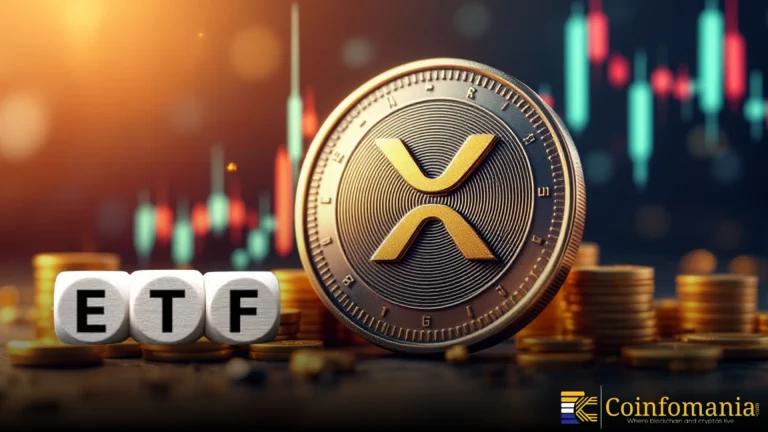Stablecoins Now Power Over 60% of On-Chain Transactions with TRON Emerging as a Leading Settlement Layer Driving $230B+ in Global Digital Finance
Let's uncover why stablecoin sector analysis shows 60%+ of all on-chain volume is powered by TRON, Tether, and Circle.

Quick Take
Summary is AI generated, newsroom reviewed.
Stablecoins now account for over 60% of all on-chain transaction volume, with TRON emerging as a leading settlement layer due to its low fees and scalability.
USDT and USDC dominate the fiat-backed stablecoins market, but new players like Ethena and SkyEcosystem are innovating with crypto-collateralized and yield-bearing models.
Regulatory clarity and institutional adoption from Visa, Mastercard, and others are accelerating the integration of stablecoins into mainstream finance.
Stablecoins have rapidly evolved from experimental trading products to become the foundation of global on-chain activity. With over $230 billion in circulating supply and 60% of all on-chain transactions being completed using stablecoins, it is safe to say these assets are no longer a footnote in the cryptocurrency ecosystem but rather the main attraction. With traditional institutions beginning to explore their potential, our discussion has shifted from whether stablecoins can scale to how quickly they will change digital finance.
This rapid adoption relies on its delivery against three critical pillars around speed, cost and regulatory flexibility. Stablecoins provide us with a pegged value (often pegged to U.S. dollars), as opposed to the volatility that comes with cryptocurrencies and thus present ideal use cases as payments, remittances and settlements. Additionally, a blockchain like TRON has gained prominence in the transfer of assets to large stablecoins because of its ability to offer higher throughput and lower transaction costs.
What Is Causing the Rise of Stablecoins?
At their core, stablecoins are digital tokens pegged to stable assets like fiat currencies. This gives them the predictability of dollars with the speed and accessibility of crypto. Over time, they’ve evolved beyond trading pairs into core infrastructure for decentralized finance (DeFi), remittances, and cross-border settlements. According to the latest stablecoin sector analysis, over 1.5 million addresses actively use stablecoins, signaling deep, global integration. Part of this growth is due to improved blockchain performance. TRON, in particular, has surged as a preferred network for stablecoin activity. Its low fees and fast confirmation times make it ideal for everyday transactions and high-frequency settlements.
Which Stablecoins Dominate the Market?
The fiat-backed stablecoin market is heavily dominated by two issuers: Tether (USDT) and Circle (USDC). Together, they command over 90% of the fiat-backed stablecoin supply. These tokens are backed by reserves and offer a straightforward bridge between traditional finance and crypto. However, innovation is brewing beyond these titans. Platforms like Ethena Labs and SkyEcosystem are introducing crypto-collateralized and interest-bearing models. These alternatives aim to expand stablecoin utility beyond payments, moving into areas like yield generation, borrowing, and hedging. As these models mature, they could diversify the stablecoin ecosystem and create new use cases beyond holding or transacting.
Why Is TRON Leading Stablecoin Settlements?
TRON has emerged as a leading player in the corner of the crypto world where stablecoins live, regularly processing more stablecoin volume than Ethereum. Its efficient and cheap structure means users in emerging markets can effectively transfer value at near-zero cost, making TRON ideally suited for remittances, payroll, and merchant payments. This uptick in volume has established TRON as one of the top global settlement layers, and its infrastructure can support many millions of transactions on a daily basis, particularly in Asia and Africa, where traditional banking can be slow, expensive, and impossible. As the stablecoin sector analysis shows, Tron is becoming invaluable for real-world utility.
What Role Will Regulation Play in Future Growth?
Regulatory clarity is becoming a key driver of stablecoin expansion. Proposed U.S. bills like the GENIUS Act and the STABLE Act aim to set clear frameworks for fiat-backed stablecoins. These policies could unlock wider adoption in banking, payroll, and even merchant settlements if passed. Visa, Mastercard, and Circle are already investing in stablecoin rails. Once regulation catches up, stablecoins could be embedded directly into e-commerce, point-of-sale systems, and remittance apps. The promise of instant, final settlement in a regulated environment may turn stablecoins into the backbone of next-gen finance.
What Are the Risks and Opportunities Ahead?
The stablecoin sector isn’t without its risks. Issues around transparency, reserve backing, and regulatory scrutiny remain hot topics. Centralized issuers must maintain public trust through audits and disclosures, while decentralized models still face technical and economic risks. But the opportunities are massive. The ongoing integration of stablecoins into payment networks, combined with their growing utility in DeFi and traditional finance, indicates we’re just scratching the surface. As infrastructure and regulation improve, stablecoins may move from crypto-native tools to global financial standards.
The Future of Digital Payments Starts Here
Stablecoins have evolved far beyond their trading roots. Today, they enable efficient, borderless payments, power DeFi ecosystems, and settle billions in global transactions daily. TRON’s rise as a stablecoin settlement layer highlights how blockchain performance directly impacts adoption. This stablecoin sector analysis makes one thing clear: stablecoins are not just a part of crypto, they are the crypto infrastructure. With $230B+ in supply and a dominant share of on-chain transaction volume, stablecoins are poised to become the financial rails of tomorrow.
References
Follow us on Google News
Get the latest crypto insights and updates.


